County times
- Details
LGSS Law, the shared legal service between Cambridgeshire and Northamptonshire county councils, opened for business in October 2010. Philip Hoult finds out from its director, Quentin Baker, about putting the project together and what the future holds for local government legal departments.
In the last year we have seen a raft of initiatives such as the appointment of a joint head of legal at Richmond and Merton Councils, where they are moving towards a combined service in October 2011. But you have been as bold as anyone in terms of putting teams together. How did LGSS Law come about and what was the rationale?
It was the first county-county merger of legal teams. From my perspective, it has got a great deal of promise simply because of the critical mass that you need to run a really efficient legal service, providing services of the type we provide to our local authorities.
This is just my view but in my experience of managing both large and small legal teams, you can get more efficiency out of legal departments so long as they are above a certain critical mass.
The other key factor for me in all of this was that it is a much better place for staff to work. I have worked in some small districts where you can find yourself working very long hours, dealing with everything that comes through the door. You don't have colleagues around who you can bounce ideas off or who know a great deal about your specialism.
In the smaller teams there is often no clear career structure. There can be a lack of resources as well, for example for research. The cost per head for the services of the major legal publishers can be prohibitive. By contrast, we have been negotiating to renew all our web-based research tools and we will make some significant and welcome savings.
So size does matter (LGSS Law has 80 FTEs and revenues of £4.5m). You can create an environment for the team to really flourish, really develop. You want your lawyers to enjoy their work, rather than go home completely shattered at the end of the day.
This greater resilience is very important. My first management role in a legal team was in a very small district and if someone was off sick, the wheels fell off. You also cannot underestimate the importance of having colleagues to talk to, who understand the challenges you face.
So how long did it take to put together?
It started off as a project to purchase an Oracle PRP system jointly for the two councils. That has delivered very significant savings on its own, £7m over the next four or five years.
On the back of that, other ideas for sharing started to get discussed and in early 2010 the inclusion of legal services was suggested. I was certainly open to it and I thought that it would probably be better to be in something like this than to be sat there waiting for the cuts to come.
So how is it structured? Do you have a host employer? And have you you co-located the teams?
We are under a joint committee of six members, with three from each authority. This was the result of the legal advice we received. The management of the LGSS group is ultimately responsible to this joint committee.
The day-to-day stuff, the operational side, is handled by a board of four directors, which includes myself. We also have a managing director, Paul Blantern, who is also the Chief Executive of Northamptonshire.
It is interesting to see that you are on the board. Sometimes when these arrangements are put in place, the lawyers – whether deliberately or otherwise – are pushed further and further down the management structure.
There can be a tendency to keep the lawyers at a safe distance, as it were, so they don’t raise too many awkward questions like the application of procurement law.
I think it was sensible to have legal represented on the board – apart from anything else, the combined legal team is quite a significant part of the overall group. There is also a recognition of how we, as a legal team, can help the broader public sector. So for instance before the merger the Cambridgeshire team secured an appointment as the PCT’s Legal Adviser. We have also been appointed as legal adviser to the Cambridgeshire fire service.
The PCT didn’t have internal legal advisers. Because we are non-profit making essentially, we can provide good quality legal services at a very reasonable price. It is fundamental to our unique selling point that we are a not-for-profit organisation. We are designed by the public sector for the public sector. We are about essentially joining together to provide collectively and collaboratively good quality services to all of the public sector and not-for-profit bodies.
The survey Local Government Lawyer did with DMH Stallard found that a lot of heads of legal had considered Total Place-style solutions on the legal front but had rejected them already – marking down such arrangements as ‘too difficult’. This seemed a bit premature.
So how does it work with the PCT and the Fire Authority? Do you have a general counsel’s role in that if they come to you and say ‘we have a legal issue, how do we handle it?’, you’ll respond on the lines of ‘well do it for you’, or ‘we can manage your relationship with your external provider to make sure you’re not getting ripped off?’
What we can provide is access to our own in-house lawyers, as though they had a team of us in their building almost. It is quite straightforward to access us.
But if it involved something that we didn’t have capacity for, or was of such a specialist nature that we didn’t feel that we would want to take that on or that we were the best place for it, we would use our framework. We went out and retendered the framework in August 2010 for the Cambridgeshire Services Legal Partnership and I have to say we got some very good rates, very good discounts from all of the successful firms.
When there is recognition that the situation is one where there may be a need for an external partner in the process, our lawyers will sit down with the client and look at the framework document. This document sets out the various panels that we have. The firms that were successful in getting on our panel were given scores on quality and price and so they are ranked. What we can say to a client is, “well okay, it’s in the commercial contract area, we’ve got a range of firms here, going from the cheaper to the more expensive”. So if you have got an extremely complicated PFI deal, say, then you might want to think about getting the higher quality at the slightly higher price. What it is about is trying to really engage the client and make them feel much more in control of who they are choosing. Then they don’t mind it as much when they get the bills.
The Cambridgeshire Legal Services Partnership is made up of the county and districts within Cambridgeshire, including the city council, working together in a looser partnership. It is not like the merger with Northampton – it is distinct from that, but it is still an interesting and useful partnership because we managed to get good value on this for instance.
Have you taken that partnership as far as goes or are the members considering taking it further and developing a more formal arrangement?
We are still developing the partnership – it is an ongoing and dynamic exercise. We have recently had some funding from our local Regional Improvement and Efficiency Partnership. This allowed us to get some research done and to develop a business case for various models of closer sharing.
We looked at the whole spectrum, from a full merger to an Essex model of a collaborative federation.
The report has only just come out and we will see what develops out of that. From my perspective, we have got a group of authorities there who all want slightly different things. What is right for one authority won’t necessarily be right for the others and we want to create a situation which will fit everyone’s requirements.
So for instance, you might get some of those authorities that would simply want to do a bit of joint procurement with us; that is absolutely fine. But you might get others who want to fund a post jointly with us, say for an employment lawyer. That’s also fine. And then you may get an authority that says they want to fully merge their legal team with ours. This has already happened in Norfolk in the case of NP Law.
I have been a few times to speak with Victoria McNeill, head of NP Law, and to see how they are getting on. I think the approach they have taken is working very well. The last time I was up there we spoke to some of the staff who had transferred in, including lawyers, and they said they were very happy with the arrangement.
They said it was absolutely fine. They had been worried that they would have problems with clients saying, “oh you’re not on the premises anymore and we can’t contact you and so on”, but they found that those problems had not been as bad as they had expected, if they existed at all. What they had found was that it was great to be working in a large team, with people who understood what was happening and could help them. It also allowed them to specialise more in particular fields if that is what they wanted to do. So the feedback again from the staff was that it was the right way to go.
This isn’t about being like private practice; it is more like being a not-for-profit organisation. I was going to say a mutual, but it is more like a social enterprise.
The Legal Services Act obviously brings in some opportunities. What do you think that offers you?
We are keeping a very close eye on these developments. Alternative business structures are something we are interested in exploring.
The key thing for me about the current structure is the fact that we have two different employers. It would be more consistent to have one single employer with one single set of terms and conditions, rather than two.
One of the positive things about initiatives such as LGSS, which you have alluded to already, is that it makes feel they have a bit more certainty and greater control of their destiny.
That is absolutely right. One thing I would say about the teams on both sides is that they have have been really willing to take the plunge. All due respect goes to them for doing that.
Are they still in their original locations? How do you create a unified team ethic and culture?
Obviously we are working as hard as we can on developing a single culture. In practical terms it is difficult to have all 80 people in one place at one time because it means shutting the offices. We have had joint Christmas dos. We have had several joint meetings, bringing together for instance our commercial lawyers, the property lawyers and so on.
One of the other things we did at a very early stage as well was to produce a single document with everybody’s details, including a small pen portrait of themselves. Everyone has access to that and so immediately everybody knew who their counterparts were and they could read a bit about them. They knew their telephone number and we encouraged people to ring, to just get on the phone and introduce themselves. People did. As I say, I have been very impressed by how the team have embraced what is a massive change. I think these two teams have shown themselves to be very, very positive about it.
How does it work financially? What happens if one of the authorities has a much greater call on your services?
Fortunately Cambridgeshire was already a traded unit while the Northampton office became one from 1 April. The councils pay for what they use and we earn whatever we earn in that sense. That makes it much, much simpler.
If we have a surplus at the end of the year, then it is divided 50/50 between the two partner authorities and they choose what to do with it. If we have a deficit, it is paid for 50/50. We have kept it as simple as possible. The rationale was that the more complicated you tried to make it, the more likely it was that there would be a dispute about how it worked. If we had wanted some bells and whistles mechanism for balancing this and that and damping that and all the rest of it, it would have been much harder work.
The good thing as well is that the finance team is also part of LGSS. It is a single finance team now, and they are merging and harmonising all their processes and procedures.
How does it work in employment terms? How would it work if a head of department employed by Cambridgeshire, for example, is having to discipline someone employed by Northamptonshire?
Everyone within LGSS sits under the joint committee which is the LGSS Joint Committee. There are definitely two separate employers and our terms and conditions are determined separately.
We have protocols in place in relation to tackling management issues. The key thing is that we keep the source of the employment contracts and terms separate. That is necessary because it avoids any possibility of equal pay claims.
What would you say are the main challenges of putting these arrangements together? What tips would you give to somebody who is not as far down the track as you are?
IT is the number one issue – we are trying to move to a single case management system. It is not so much the money, securing the investment, that is the problem. It is actually just having a very clear focus on what your IT requirements are.
Both offices had IKEN before and what we are doing is setting them up now in a harmonious way, so they mirror each other. That means a lawyer working in the Northampton office could come to this office and switch the system on and it would be exactly the same.
What has been the impact in terms of job losses?
I have been working on a restructure as part of the merger and we are going to have a single management team.
As a result half the management roles will be removed from the structure, but that does not necessarily mean that those people are all going to be leaving the building. Some will be redeployed into non-management roles because we have plenty of legal work.
As I said, at this stage it is not about getting rid of loads of people. We have got an increasing demand for legal services because of the cuts, for example in employment law. The contracting work also goes up as the amount of outsourcing increases.
How will you measure the success of the project?
There will be a mixture of criteria, but primarily it is going to be about client satisfaction – whether the clients approve of the service and see it as good quality.
We are Lexcel accredited, so we are very much focused on client feedback and we undertake various surveys. There is a questionnaire attached to each case and there is also an annual type of survey. Then there is also the less formal side such as the compliments and complaints register that we maintain. That all helps us get an overall picture.
As part of the transition project, we have been developing a common suite of performance indicators that are purely for our own benefit. They will give us a dashboard on how we are doing and provide information on things like the average cost per case and the average cost of the legal service per resident. But we are also looking at measuring the overall hours charged, that kind of stuff as well. What we are hoping to see is that our productivity will increase and that is because we are developing a team under the new structure which can focus more on the legal fee earning.
The business support team can also focus on supporting the fee earners to focus on the fee earning side. Often in legal departments you will find that the fee-earners get caught up in doing stuff which really they should not be doing, where they are not best utilised. The work in question could well be done by a paralegal or by other members of the support staff. The new structure that we have been consulting on does increase the numbers of paralegals and it does increase the ratio of support staff to lawyers slightly.
The way I envisage this is that it is more akin to having your lawyer as the leader of a small team. So they are not just the lawyer working away with a secretary, they are actually a lawyer who relates to a number of different people, including paralegals and support staff. They will manage the cases and set the overall strategy. They may do much of the client-facing stuff as well, but then they will farm out the activities and manage they team they have got in place for a particular case.
One of our performance indicators is to reduce our external legal spend, which is in the region of £1.5m a year. But this is not about doing the private sector out of business – there will always be synergies and a need for partnership working with the private sector. I certainly don’t see us in competition with our private sector colleagues. I think what we will do is start to use them more smartly. And they recognise and understand that.
Can local government lawyers in the current climate expect more of their clients, that is, a better understanding of the legal issues at stake? Should the lawyer’s role be more prevention than cure?
Absolutely. I think that is one of the values of us being a not-for-profit organisation. On one level we don’t mind if we are actually doing ourselves out of work to a certain extent.
Adding value to a client in that respect is really part and parcel of what we are doing. We want to be more proactive, to understand the client’s work more carefully. I have provided briefings to senior management on major developments, such as the London Councils grant funding judicial review.
There are other ways as well of helping our clients, whether it is in terms of the instructions that we get and what the clients can do with their own staff which might be a lot cheaper than paying us to do it. We have talked to our property team and discussed with them how we could divide the work up in order that some of their people did some of the tasks that were being passed over to us. They could readily do those tasks and we think it could save a lot of money.
A lot has been written about the general power of competence in the Localism Bill. It will be interesting to see whether there is a difference between what the lawyers think it will allow councils to do and what members and other officers think it will.
If the general power of competence stays in its current form of drafting, there is going to be ample scope for the lawyers to have a right old bun fight over it. In some respects this is simply because of the language that is used. Some of the words chosen are hardly your standard sort of ‘legalese’, if you like. It is not entirely straightforward and the wording does seem to be a bit convoluted.
But it will be a good thing if it enables councils to operate with slightly more imagination, particularly it if helps us with setting up innovative structures which can provide services to the community. It will be great if it helps us do that.
Where do you see the local authority legal sector in five to ten years time?
I do think we will have more of a regional sort of set up. What we are seeing here with Cambridgeshire and Northamptonshire, and in Norfolk, is a very sensible approach. What would make it even better is if we were providing legal services for all of the public bodies in the area, as we are all interested in many of the same types of law.
If you look at the police service, if you look at the fire service, if you look at the PCTs or the proposed GP consortiums, we are all interested in issues such as property, employment, procurement and so on. Those are the key things that all of those bodies share and we could really develop some very efficient, very specialised legal services – centres of excellence, if you like.
Central government has been doing this for years with the Government Legal Service, which is like a large shared service supplying all of the different departments. Having something on a county basis helps because it fits all sorts of boundaries. So I think that can be accomplished.
What we will find, for example with the Cambridgeshire Legal Services Partnership, is that there will be some authorities that are keener on a closer collaboration than others. But that is fine. There is absolutely no pressure on any of those partners to do anything.
Philip Hoult is editor of Local Government Lawyer.
LGSS Law, the shared legal service between Cambridgeshire and Northamptonshire county councils, opened for business in October 2010. Philip Hoult finds out from its director, Quentin Baker, about putting the project together and what the future holds for local government legal departments.
In the last year we have seen a raft of initiatives such as the appointment of a joint head of legal at Richmond and Merton Councils, where they are moving towards a combined service in October 2011. But you have been as bold as anyone in terms of putting teams together. How did LGSS Law come about and what was the rationale?
It was the first county-county merger of legal teams. From my perspective, it has got a great deal of promise simply because of the critical mass that you need to run a really efficient legal service, providing services of the type we provide to our local authorities.
This is just my view but in my experience of managing both large and small legal teams, you can get more efficiency out of legal departments so long as they are above a certain critical mass.
The other key factor for me in all of this was that it is a much better place for staff to work. I have worked in some small districts where you can find yourself working very long hours, dealing with everything that comes through the door. You don't have colleagues around who you can bounce ideas off or who know a great deal about your specialism.
In the smaller teams there is often no clear career structure. There can be a lack of resources as well, for example for research. The cost per head for the services of the major legal publishers can be prohibitive. By contrast, we have been negotiating to renew all our web-based research tools and we will make some significant and welcome savings.
So size does matter (LGSS Law has 80 FTEs and revenues of £4.5m). You can create an environment for the team to really flourish, really develop. You want your lawyers to enjoy their work, rather than go home completely shattered at the end of the day.
This greater resilience is very important. My first management role in a legal team was in a very small district and if someone was off sick, the wheels fell off. You also cannot underestimate the importance of having colleagues to talk to, who understand the challenges you face.
So how long did it take to put together?
It started off as a project to purchase an Oracle PRP system jointly for the two councils. That has delivered very significant savings on its own, £7m over the next four or five years.
On the back of that, other ideas for sharing started to get discussed and in early 2010 the inclusion of legal services was suggested. I was certainly open to it and I thought that it would probably be better to be in something like this than to be sat there waiting for the cuts to come.
So how is it structured? Do you have a host employer? And have you you co-located the teams?
We are under a joint committee of six members, with three from each authority. This was the result of the legal advice we received. The management of the LGSS group is ultimately responsible to this joint committee.
The day-to-day stuff, the operational side, is handled by a board of four directors, which includes myself. We also have a managing director, Paul Blantern, who is also the Chief Executive of Northamptonshire.
It is interesting to see that you are on the board. Sometimes when these arrangements are put in place, the lawyers – whether deliberately or otherwise – are pushed further and further down the management structure.
There can be a tendency to keep the lawyers at a safe distance, as it were, so they don’t raise too many awkward questions like the application of procurement law.
I think it was sensible to have legal represented on the board – apart from anything else, the combined legal team is quite a significant part of the overall group. There is also a recognition of how we, as a legal team, can help the broader public sector. So for instance before the merger the Cambridgeshire team secured an appointment as the PCT’s Legal Adviser. We have also been appointed as legal adviser to the Cambridgeshire fire service.
The PCT didn’t have internal legal advisers. Because we are non-profit making essentially, we can provide good quality legal services at a very reasonable price. It is fundamental to our unique selling point that we are a not-for-profit organisation. We are designed by the public sector for the public sector. We are about essentially joining together to provide collectively and collaboratively good quality services to all of the public sector and not-for-profit bodies.
The survey Local Government Lawyer did with DMH Stallard found that a lot of heads of legal had considered Total Place-style solutions on the legal front but had rejected them already – marking down such arrangements as ‘too difficult’. This seemed a bit premature.
So how does it work with the PCT and the Fire Authority? Do you have a general counsel’s role in that if they come to you and say ‘we have a legal issue, how do we handle it?’, you’ll respond on the lines of ‘well do it for you’, or ‘we can manage your relationship with your external provider to make sure you’re not getting ripped off?’
What we can provide is access to our own in-house lawyers, as though they had a team of us in their building almost. It is quite straightforward to access us.
But if it involved something that we didn’t have capacity for, or was of such a specialist nature that we didn’t feel that we would want to take that on or that we were the best place for it, we would use our framework. We went out and retendered the framework in August 2010 for the Cambridgeshire Services Legal Partnership and I have to say we got some very good rates, very good discounts from all of the successful firms.
When there is recognition that the situation is one where there may be a need for an external partner in the process, our lawyers will sit down with the client and look at the framework document. This document sets out the various panels that we have. The firms that were successful in getting on our panel were given scores on quality and price and so they are ranked. What we can say to a client is, “well okay, it’s in the commercial contract area, we’ve got a range of firms here, going from the cheaper to the more expensive”. So if you have got an extremely complicated PFI deal, say, then you might want to think about getting the higher quality at the slightly higher price. What it is about is trying to really engage the client and make them feel much more in control of who they are choosing. Then they don’t mind it as much when they get the bills.
The Cambridgeshire Legal Services Partnership is made up of the county and districts within Cambridgeshire, including the city council, working together in a looser partnership. It is not like the merger with Northampton – it is distinct from that, but it is still an interesting and useful partnership because we managed to get good value on this for instance.
Have you taken that partnership as far as goes or are the members considering taking it further and developing a more formal arrangement?
We are still developing the partnership – it is an ongoing and dynamic exercise. We have recently had some funding from our local Regional Improvement and Efficiency Partnership. This allowed us to get some research done and to develop a business case for various models of closer sharing.
We looked at the whole spectrum, from a full merger to an Essex model of a collaborative federation.
The report has only just come out and we will see what develops out of that. From my perspective, we have got a group of authorities there who all want slightly different things. What is right for one authority won’t necessarily be right for the others and we want to create a situation which will fit everyone’s requirements.
So for instance, you might get some of those authorities that would simply want to do a bit of joint procurement with us; that is absolutely fine. But you might get others who want to fund a post jointly with us, say for an employment lawyer. That’s also fine. And then you may get an authority that says they want to fully merge their legal team with ours. This has already happened in Norfolk in the case of NP Law.
I have been a few times to speak with Victoria McNeill, head of NP Law, and to see how they are getting on. I think the approach they have taken is working very well. The last time I was up there we spoke to some of the staff who had transferred in, including lawyers, and they said they were very happy with the arrangement.
They said it was absolutely fine. They had been worried that they would have problems with clients saying, “oh you’re not on the premises anymore and we can’t contact you and so on”, but they found that those problems had not been as bad as they had expected, if they existed at all. What they had found was that it was great to be working in a large team, with people who understood what was happening and could help them. It also allowed them to specialise more in particular fields if that is what they wanted to do. So the feedback again from the staff was that it was the right way to go.
This isn’t about being like private practice; it is more like being a not-for-profit organisation. I was going to say a mutual, but it is more like a social enterprise.
The Legal Services Act obviously brings in some opportunities. What do you think that offers you?
We are keeping a very close eye on these developments. Alternative business structures are something we are interested in exploring.
The key thing for me about the current structure is the fact that we have two different employers. It would be more consistent to have one single employer with one single set of terms and conditions, rather than two.
One of the positive things about initiatives such as LGSS, which you have alluded to already, is that it makes feel they have a bit more certainty and greater control of their destiny.
That is absolutely right. One thing I would say about the teams on both sides is that they have have been really willing to take the plunge. All due respect goes to them for doing that.
Are they still in their original locations? How do you create a unified team ethic and culture?
Obviously we are working as hard as we can on developing a single culture. In practical terms it is difficult to have all 80 people in one place at one time because it means shutting the offices. We have had joint Christmas dos. We have had several joint meetings, bringing together for instance our commercial lawyers, the property lawyers and so on.
One of the other things we did at a very early stage as well was to produce a single document with everybody’s details, including a small pen portrait of themselves. Everyone has access to that and so immediately everybody knew who their counterparts were and they could read a bit about them. They knew their telephone number and we encouraged people to ring, to just get on the phone and introduce themselves. People did. As I say, I have been very impressed by how the team have embraced what is a massive change. I think these two teams have shown themselves to be very, very positive about it.
How does it work financially? What happens if one of the authorities has a much greater call on your services?
Fortunately Cambridgeshire was already a traded unit while the Northampton office became one from 1 April. The councils pay for what they use and we earn whatever we earn in that sense. That makes it much, much simpler.
If we have a surplus at the end of the year, then it is divided 50/50 between the two partner authorities and they choose what to do with it. If we have a deficit, it is paid for 50/50. We have kept it as simple as possible. The rationale was that the more complicated you tried to make it, the more likely it was that there would be a dispute about how it worked. If we had wanted some bells and whistles mechanism for balancing this and that and damping that and all the rest of it, it would have been much harder work.
The good thing as well is that the finance team is also part of LGSS. It is a single finance team now, and they are merging and harmonising all their processes and procedures.
How does it work in employment terms? How would it work if a head of department employed by Cambridgeshire, for example, is having to discipline someone employed by Northamptonshire?
Everyone within LGSS sits under the joint committee which is the LGSS Joint Committee. There are definitely two separate employers and our terms and conditions are determined separately.
We have protocols in place in relation to tackling management issues. The key thing is that we keep the source of the employment contracts and terms separate. That is necessary because it avoids any possibility of equal pay claims.
What would you say are the main challenges of putting these arrangements together? What tips would you give to somebody who is not as far down the track as you are?
IT is the number one issue – we are trying to move to a single case management system. It is not so much the money, securing the investment, that is the problem. It is actually just having a very clear focus on what your IT requirements are.
Both offices had IKEN before and what we are doing is setting them up now in a harmonious way, so they mirror each other. That means a lawyer working in the Northampton office could come to this office and switch the system on and it would be exactly the same.
What has been the impact in terms of job losses?
I have been working on a restructure as part of the merger and we are going to have a single management team.
As a result half the management roles will be removed from the structure, but that does not necessarily mean that those people are all going to be leaving the building. Some will be redeployed into non-management roles because we have plenty of legal work.
As I said, at this stage it is not about getting rid of loads of people. We have got an increasing demand for legal services because of the cuts, for example in employment law. The contracting work also goes up as the amount of outsourcing increases.
How will you measure the success of the project?
There will be a mixture of criteria, but primarily it is going to be about client satisfaction – whether the clients approve of the service and see it as good quality.
We are Lexcel accredited, so we are very much focused on client feedback and we undertake various surveys. There is a questionnaire attached to each case and there is also an annual type of survey. Then there is also the less formal side such as the compliments and complaints register that we maintain. That all helps us get an overall picture.
As part of the transition project, we have been developing a common suite of performance indicators that are purely for our own benefit. They will give us a dashboard on how we are doing and provide information on things like the average cost per case and the average cost of the legal service per resident. But we are also looking at measuring the overall hours charged, that kind of stuff as well. What we are hoping to see is that our productivity will increase and that is because we are developing a team under the new structure which can focus more on the legal fee earning.
The business support team can also focus on supporting the fee earners to focus on the fee earning side. Often in legal departments you will find that the fee-earners get caught up in doing stuff which really they should not be doing, where they are not best utilised. The work in question could well be done by a paralegal or by other members of the support staff. The new structure that we have been consulting on does increase the numbers of paralegals and it does increase the ratio of support staff to lawyers slightly.
The way I envisage this is that it is more akin to having your lawyer as the leader of a small team. So they are not just the lawyer working away with a secretary, they are actually a lawyer who relates to a number of different people, including paralegals and support staff. They will manage the cases and set the overall strategy. They may do much of the client-facing stuff as well, but then they will farm out the activities and manage they team they have got in place for a particular case.
One of our performance indicators is to reduce our external legal spend, which is in the region of £1.5m a year. But this is not about doing the private sector out of business – there will always be synergies and a need for partnership working with the private sector. I certainly don’t see us in competition with our private sector colleagues. I think what we will do is start to use them more smartly. And they recognise and understand that.
Can local government lawyers in the current climate expect more of their clients, that is, a better understanding of the legal issues at stake? Should the lawyer’s role be more prevention than cure?
Absolutely. I think that is one of the values of us being a not-for-profit organisation. On one level we don’t mind if we are actually doing ourselves out of work to a certain extent.
Adding value to a client in that respect is really part and parcel of what we are doing. We want to be more proactive, to understand the client’s work more carefully. I have provided briefings to senior management on major developments, such as the London Councils grant funding judicial review.
There are other ways as well of helping our clients, whether it is in terms of the instructions that we get and what the clients can do with their own staff which might be a lot cheaper than paying us to do it. We have talked to our property team and discussed with them how we could divide the work up in order that some of their people did some of the tasks that were being passed over to us. They could readily do those tasks and we think it could save a lot of money.
A lot has been written about the general power of competence in the Localism Bill. It will be interesting to see whether there is a difference between what the lawyers think it will allow councils to do and what members and other officers think it will.
If the general power of competence stays in its current form of drafting, there is going to be ample scope for the lawyers to have a right old bun fight over it. In some respects this is simply because of the language that is used. Some of the words chosen are hardly your standard sort of ‘legalese’, if you like. It is not entirely straightforward and the wording does seem to be a bit convoluted.
But it will be a good thing if it enables councils to operate with slightly more imagination, particularly it if helps us with setting up innovative structures which can provide services to the community. It will be great if it helps us do that.
Where do you see the local authority legal sector in five to ten years time?
I do think we will have more of a regional sort of set up. What we are seeing here with Cambridgeshire and Northamptonshire, and in Norfolk, is a very sensible approach. What would make it even better is if we were providing legal services for all of the public bodies in the area, as we are all interested in many of the same types of law.
If you look at the police service, if you look at the fire service, if you look at the PCTs or the proposed GP consortiums, we are all interested in issues such as property, employment, procurement and so on. Those are the key things that all of those bodies share and we could really develop some very efficient, very specialised legal services – centres of excellence, if you like.
Central government has been doing this for years with the Government Legal Service, which is like a large shared service supplying all of the different departments. Having something on a county basis helps because it fits all sorts of boundaries. So I think that can be accomplished.
What we will find, for example with the Cambridgeshire Legal Services Partnership, is that there will be some authorities that are keener on a closer collaboration than others. But that is fine. There is absolutely no pressure on any of those partners to do anything.
Philip Hoult is editor of Local Government Lawyer.
Contracts Lawyer
Deputy Director Legal and Democratic Services
Solicitor/Lawyer (Contracts and Procurement)
Governance Lawyer
Legal Director - Government and Public Sector
Antisocial Behaviour Legal Officer
Lawyer (Planning and Regulatory)
Solicitor - Litigation
Legal Adviser
Regulatory/Litigation Lawyer
Locum roles
 Masterclass – MCA and Court of Protection - Legal Update - Peter Edwards Law Training
Masterclass – MCA and Court of Protection - Legal Update - Peter Edwards Law Training
21-01-2026
Online (live)
 Managing settlements: the legal and practical issues, and the pitfalls to avoid - Blake Morgan
Managing settlements: the legal and practical issues, and the pitfalls to avoid - Blake Morgan
22-01-2026 10:00 am
Online (live)
 Children and Young People (DoL, Competency and Capacity) - Peter Edwards Law Training
Children and Young People (DoL, Competency and Capacity) - Peter Edwards Law Training
28-01-2026
Online (live)
 HMPL Building Blocks: Legal Tools to Combat Anti-Social Behaviour - Devonshires
HMPL Building Blocks: Legal Tools to Combat Anti-Social Behaviour - Devonshires
17-02-2026
Online (live)
 Freedom of thought, belief and religion: Article 9 ECHR - Francis Taylor Building
Freedom of thought, belief and religion: Article 9 ECHR - Francis Taylor Building
19-02-2026
Online (live)
 Grappling with S73 - variations of conditions applications or appeals - Ivy Legal
Grappling with S73 - variations of conditions applications or appeals - Ivy Legal
09-03-2026
Online (live)
 HMPL Building Blocks: Tenancy Management – Assignment, Mutual Exchange and Succession - Devonshires
HMPL Building Blocks: Tenancy Management – Assignment, Mutual Exchange and Succession - Devonshires
12-03-2026
Online (live)
 Section 31(2A) Senior Courts Act: where have we got to? - Francis Taylor Building
Section 31(2A) Senior Courts Act: where have we got to? - Francis Taylor Building
18-03-2026 1:00 pm
Online (live)
 Save the Date: The Law of Public Rights of Way, Commons and Town or Village Greens Seminar (Hybrid) - Francis Taylor Building
Save the Date: The Law of Public Rights of Way, Commons and Town or Village Greens Seminar (Hybrid) - Francis Taylor Building
25-03-2026
London
 HMPL Building Blocks: A Housing Officer’s Guide to Court Proceedings - Devonshires
HMPL Building Blocks: A Housing Officer’s Guide to Court Proceedings - Devonshires
14-04-2026
Online (live)























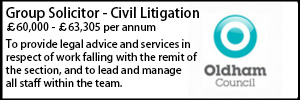















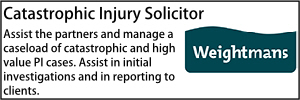












































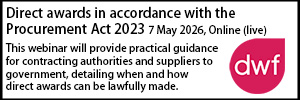





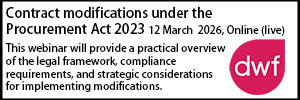





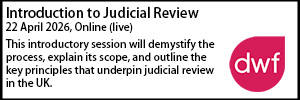



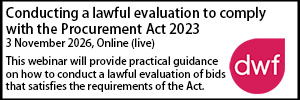
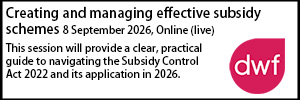




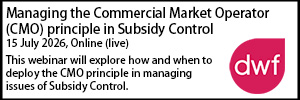


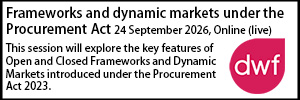







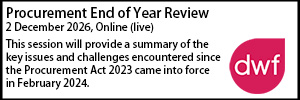


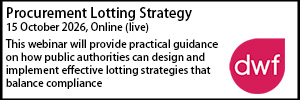



 First Aid Level 3 - LBL Skills
First Aid Level 3 - LBL Skills  Capsticks Housing Diploma
Capsticks Housing Diploma  Standish 18 months on - 42BR
Standish 18 months on - 42BR  Accelerating EV Charging Infrastructure in the Public Sector - DWF
Accelerating EV Charging Infrastructure in the Public Sector - DWF  Building Safety Act Conference 2026 - Landmark Chambers
Building Safety Act Conference 2026 - Landmark Chambers  Education Law Conference - 3PB
Education Law Conference - 3PB  Annual Planning Seminar 2026 - No.5 Barristers
Annual Planning Seminar 2026 - No.5 Barristers 